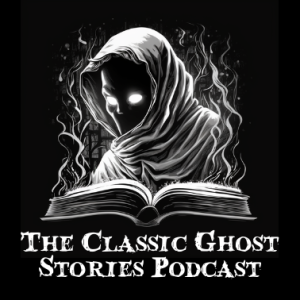
Sir Gawain & The Green KnightSir Gawain and The Green Knight is the original Christmas Ghost Story. Or technically a supernatural story set at Christmas in the kingdom of Logres ruled by King Arthur. It's pretty gothic.This is a prose translation of a Middle English poem called Sir Gawain and The Green Knight. The translation by Jessie Weston was published in 1898 and though it is certainly not Middle English she has left enough archaic words in to keep that flavour.Jessie Weston herself was born in 1850 in Surrey, England, the daughter of a tea merchant. When she was young the family moved to Bournemouth off England’s south coast and she began writing there. She studied in Hildesheim in Germany and in Paris and at the Crystal Palace School of Art in South London. She was most famous for her studies of Arthurian romances and the Grail legend where she put forth the ideas that the material was actually pre-Christian and pagan in origin. T S Eliot’s The Wasteland was influenced by Weston’s Arthurian studies. The Green Knight as it stands was composed no later than the end of the 14th Century (the date of the manuscript) and may be much older. The language is Mercian influenced Middle English, probably from Lancashire. The boundary between Mercian and Northumbrian Old English runs through Lancashire and its dialect is influenced by both, but South Lancashire and Cheshire have Midlands’ such as pronouncing the ‘g’ in ‘king’ and ‘thing’.If you’re interested in Old English dialects, check out Simon Roper’s Youtube Channel for a real treat. The poem shows signs of oral storytelling with the rich, detailed descriptions that run in sequences and would probably delight an audience as they were elaborated. The themes are of honour and courage, as befitted the courtly audience, but also of love and fashion, which traditionally interest ladies. Tricky subject these days, but that was the established view for centuries. Things change. I for one embrace change, while I mourn what it lost. I’m a bit like the VoiceOver by Galadriel at the start of the Fellowship of The Ring movie.There are folkloric features which Weston perhaps emphasis because she was interested in them: He bears a holly bough to symbolise life and rebirth. He pole vaults over water as fairies can’t normally cross running water. The bargain is for a year and a day which is in all good fairy tales. The motif of the talking head appears again and again in Celtic stories: Bran the Blessed, and Bricriu’s Feast from the Ulster Cycle where the beheading challenge is seen. Of course the severed head is seen on a platter in the Perceval/Parsifal/Peredur Stories.The old lady in the castle is the famous with Morgana La Fee.“I trow” is “I think” or “I believe”“In sooth” is “truly”, “really” ‘fo sho’“Wit, wot, witen’ are ’to know’ . So “ I wit” is cognate with the German “Ich weiss” or the Dutch “ek weet”“List” is “like” or “please” “As he may list” “As he pleases”“Welkin” is sky.“Hearken” is “hear, or listen to”Going through the recording as I edit, it strikes me that perhaps the green lace on the axe is the one that Gawain later gets from the lady and transpires to have been the knight’s. It was the magic of this lace that allowed him to survive the blow. Not sure why I didn’t figure that before. This is just what a modern author would be: place an item and bury it in detail so its significance isn’t grasped until much later.It’s mainly showing not telling too. We get some insight into Gawain’s thinking, but mostly the situations are simply described and we infer internal motivations and ruminations from what we hear. Described.I also think it’s Support the showVisit us here: www.ghostpod.orgBuy me a coffee if you're glad I do this: https://ko-fi.com/tonywalkerIf you really want to help me, become a Patreon: https://www.patreon.com/barcudMusic by The Heartwood Institute: https://bit.ly/somecomeback
Learn more about your ad choices. Visit megaphone.fm/adchoices
view more
More Episodes
The Catacomb by Peter Shilston
 2022-06-24
2022-06-24
 2022-06-24
2022-06-24
Mean Mr Mullins by Cathu Sahu
 2022-06-10
2022-06-10
 2022-06-10
2022-06-10
The Call of Cthulhu by H P Lovecraft
 2022-05-27
2022-05-27
 2022-05-27
2022-05-27
They Bite by Anthony Boucher
 2022-05-20
2022-05-20
 2022-05-20
2022-05-20
The Crown Derby Plate by Marjorie Bowen
 2022-05-13
2022-05-13
 2022-05-13
2022-05-13
The Hounds of Tindalos by Frank Belknap Long
 2022-04-29
2022-04-29
 2022-04-29
2022-04-29
The Sandman by E T A Hoffman
 2022-04-22
2022-04-22
 2022-04-22
2022-04-22
Out of the Deep by Walter de la Mare
 2022-04-15
2022-04-15
 2022-04-15
2022-04-15
The Music of Erich Zann by H P Lovecraft
 2022-04-08
2022-04-08
 2022-04-08
2022-04-08
Thirteen At Table by Lord Dunsany
 2022-04-01
2022-04-01
 2022-04-01
2022-04-01
The Crowd by Ray Bradbury
 2022-03-25
2022-03-25
 2022-03-25
2022-03-25
012345678910111213141516171819
Create your
podcast in
minutes
- Full-featured podcast site
- Unlimited storage and bandwidth
- Comprehensive podcast stats
- Distribute to Apple Podcasts, Spotify, and more
- Make money with your podcast
It is Free
- Privacy Policy
- Cookie Policy
- Terms of Use
- Consent Preferences
- Copyright © 2015-2024 Podbean.com






